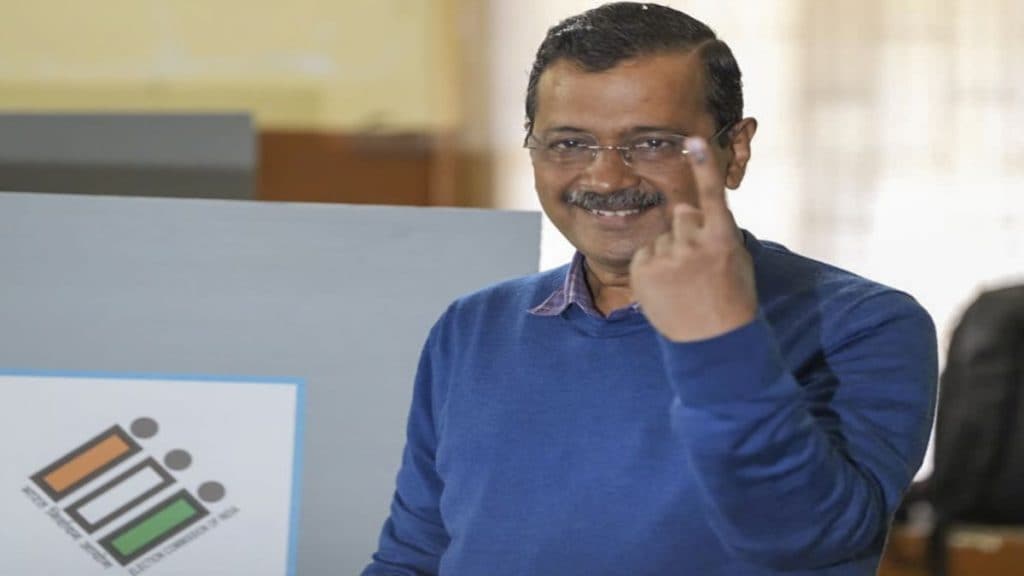After a day of voting on Wednesday (February 5), Delhi has sealed its future for the next five years. Results for the high-stakes elections won’t be known until Saturday (February 8) but that hasn’t stopped people from speculating whether Arvind Kejriwal’s Aam Aadmi Party (AAP) would score a third consecutive term or if Prime Minister Narendra Modi-led BJP would emerge victorious.
But there was another fact that many people discussed about the Delhi Assembly elections and that’s the voter turnout. Was it higher than 2020? Was it lower? What could be inferred from the voter turnout and would it impact the overall results?
If you are one of the many who had these questions and wanted answers, read on to find out more.
Lakhs and lakhs of people queued up outside voting centres across the country’s capital to cast their votes. Everywhere one looked one could see visuals of prominent personalities, including former
Delhi CM Arvind Kejriwal and ex-Congress chief Sonia Gandhi, casting their ballot.
And after a long day of voting — the exercise came to an end at 6 pm — the Election Commission announced that the voter turnout until 11.30 pm was 60.42 per cent. Of the 11 districts in Delhi, the north-east district recorded the highest voter turnout of 66.25 per cent, while south-east witnessed the lowest of 56.16 per cent.
Data further revealed that among specific constituencies, Mustafabad recorded the highest turnout at 69 per cent. Seelampur came in second with 68.7 per cent, followed by the reserved constituency of Seemapuri where 65.3 per cent votes were cast.
On the other hand, Mehrauli witnessed the lowest turnout of 53 per cent followed by Model Town at 53.4 per cent.
This election’s turnout in Delhi is much lower compared to the 2020 Assembly polls. In that year, the Capital recorded a turnout of 62.59 per cent. Data reveals that the voter turnout this year is the lowest since 2008, when only 57.8 per cent of the total number of electors had cast their vote.
In the following election of 2013, nearly 66 per cent of the total electorate cast their vote, while 2015 saw a record voting high of 67.5 per cent.
However, this Delhi Assembly election voter turnout is higher than what was witnessed in the 2024 Lok Sabha Assembly elections — 58.69 per cent. This means that the capital saw a rise of 1.73 per cent points in voter turnout.
However, Election Commission of India director Anuj Chandak said that these figures were provisional and that the final figures will be updated in the next couple of days.
This election’s voter turnout is starkly different from the past when the Capital witnessed high numbers of voters. A senior Delhi election official said that the turnout was indeed less one should wait for the final turnout figures before looking for reasons.
But will the lower voter turnout have any impact on the results, which are scheduled for February 8? Pollsters have an answer to this.
Some believe that lower or higher voter turnouts are not a clear indicator of pro- or anti-incumbency. Recently-held elections, in fact, have shown that voter turnouts have provided no indications of which way people would cast their vote.
For instance, Rajasthan and Chhattisgarh, which went to the polls in 2023, which saw anti-incumbency verdicts, saw an increase in voter turnout compared to 2018. In Maharashtra and Jharkhand, big pro-incumbency verdicts were accompanied by significant increase in turnout.
But some point to Delhi’s past voting trends for clues. Some political pundits note that the AAP has benefited from higher voter turnouts, meaning that a lower voter turnout this year could spell trouble for them. Simply put, in 2015 and 2020, when Delhi voted for AAP, there was a high voter turnout.
If one goes by the
exit polls, however, it appears that the lower voter turnout has been a boon for the BJP. Almost all exit polls have predicted a win for the BJP in the national capital, which would end a 27-year drought for the party.
The People’s Pulse exit poll has predicted that the BJP will romp to victory with 51 to 60 seats in the Delhi Assembly. The majority mark is 36 in the Assembly. The pollster has predicted a mere 10 to 19 seats for AAP, while it says the Congress will draw a blank in Delhi.
Chanakya Strategies exit poll has predicted the BJP will win 39-44 seats. AAP will likely win 25-28 seats. Chanakya Strategies predicted the most seats for the Congress – just three. Even the JVC exit poll has said that BJP will win 39-45 seats while AAP will get 22-31 seats. It gave the Congress 0-2 seats.
Matrize is the only exit poll that has predicted a neck-and-neck fight. It said the BJP would win 35-40 seats; AAP is expected to win 32-37 seats. It predicted zero-one seats for the Congress.
However, the AAP has rejected the exit poll predictions. AAP spokesperson Priyanka Kakkar said, “Exit polls have never been right about the AAP. Every time, the AAP has stormed to power with a massive mandate, and this time will be no different.”
Will AAP’s statement hold or will the exit polls prove right this time? We will have to wait until February 8 to know.
With inputs from agencies
Link to article –
Delhi Assembly elections: Is a lower voter turnout going to prove beneficial for the BJP?
